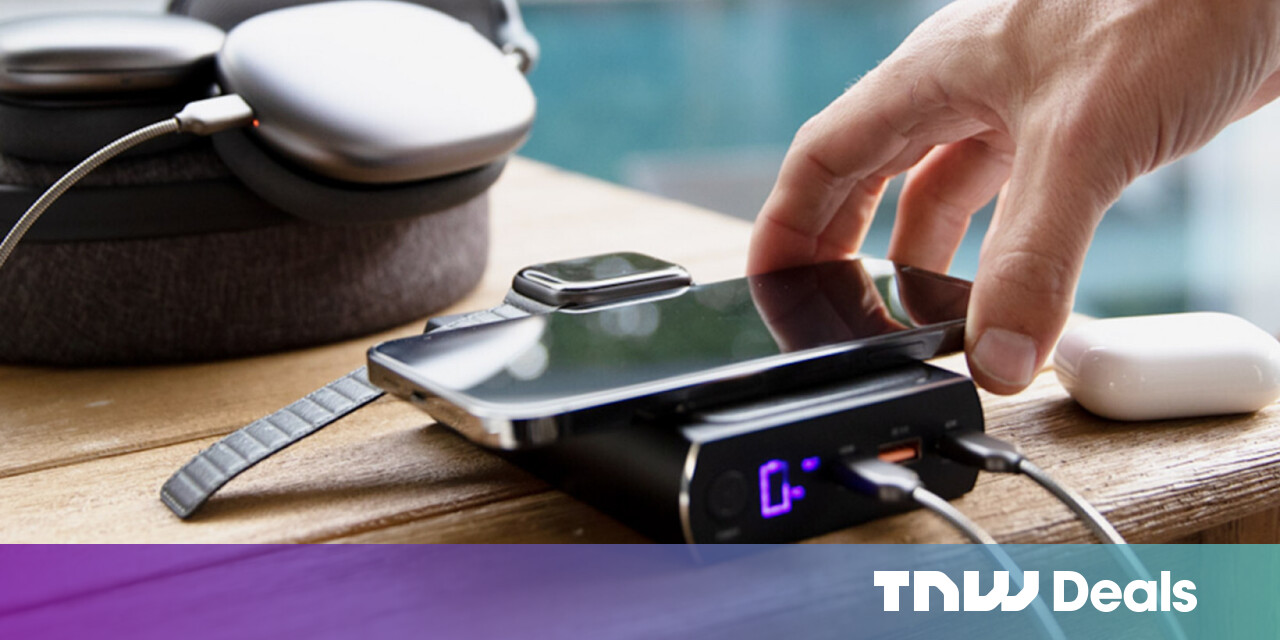#It’s Good, It’s Affordable, and It’s Usually On Sale – Review Geek

Table of Contents
“It’s Good, It’s Affordable, and It’s Usually On Sale – Review Geek”
Price: $49

The Bumblebee II offers high-quality 24-bit 96kHz audio in a small and affordable package. Plus, it’s often on sale.
An affordable microphone can instantly improve your video calls, or even open the door to amateur recordings. If you’re just looking to get your foot in the door, I strongly suggest buying a Bumblebee II, as it captures 24-bit audio at a 96kHz sample rate and works over USB cable. Just don’t buy it at full price.
Here’s What We Like
- Great price, especially when on sale
- Small and lightweight design
- Impressive audio quality at 24-bit/96kHz
- Good for podcasts, video calls, and music recording
And What We Don’t
- Feels cheap
- Awkward, somewhat unintuitive design
- Direct monitoring sounds distorted
- Included desktop stand isn’t great
Design: Kinda Cool, Kinda Awkward
- Connectivity: USB-C (USB-C to USB-A cable included)
- Monitoring: Yes, via 3.5mm headphone jack
- Weight: 0.88 lbs
- Dimensions: 8 inches tall, 5 inches wide
- Works with Mic Stands: Yes (Screw thread adapter included)
In terms of visual design, I’m a big fan of the Bumblebee II. It looks cool, it’s compact, and aside from the big knob, there’s just one button. But in practical terms, this is an awkward microphone with a bit of a learning curve, which is pretty disappointing (especially for a mic that sounds this good).
While I’m glad that Neat Microphones includes a desktop stand with the Bumblebee II, it’s a pretty useless addition. This microphone has a front-facing capsule, meaning that you need to speak into the front of this mic (where the big knob is) to get a clear recording. So, unless you stack this thing on a bunch of books, you need to lean it back and crank the gain, which isn’t ideal.
The desktop stand also interferes with the Bumblebee II’s USB and headphone jacks. It’s hard to plug something into this microphone when it’s on the included stand, and if you use a thick or angled headphone cable, it will get pinched!

Clearly, Neat Microphones expects its customers to use a boom arm or mic stand with the Bumblebee II. The good news is that this mic is pretty lightweight, so a cheap boom arm will suffice. (But I’d appreciate a better desktop stand, as I don’t like to have full-sized boom arms or mic stands hovering over my desk.)
But the stand isn’t the only problem. While the Bumblebee II’s controls look very simple and straightforward, the big knob is actually a multi-function control. It can adjust gain, playback volume, and your direct-to-headphones mix. These settings are accessed by pressing the knob, and the selected setting is indicated by a color-changing backlight.
To me, this setup is kinda confusing. I’d prefer something more simple—three separate LEDs that are labeled to show which setting is selected. And, as noted by Junae Benne at Tom’s Hardware, the colors displayed by this microphone (yellow, green, and blue) aren’t colorblind-friendly. Whether you’re colorblind or not, it might take you a while to get used to these controls.
Sound Quality: I’m Impressed

- Mic Type: Condenser
- Polar Pattern: Cardioid
- Frequency Response: 20Hz-20kHz
- Sample and Bit Rate: 96kH, 24 bit
- Maximum SPL: 128 dB
- Noise Level: 14 dB-A
The Bumblebee II features a 25mm condenser capsule with a cardioid (heart-shaped) polar pattern. It has an internal shock mount, which is surprisingly effective, and it captures 24-bit audio at a 96kHz sample rate. (Most USB mics at this price, including the famous Blue Yeti, have a 48kHz sample rate.)
I’m very happy with these specs. And, more importantly, I’m happy with the Bumblebee II’s audio quality. It’s an impressive little mic with a clear and smooth sound. The treble doesn’t sound like an ice pick, and the low end isn’t boomy. It doesn’t match the quality of an expensive studio mic, but I prefer it to the Yeti Blue, and it’s more than good enough for basic home recordings or livestreams.
According to the frequency response curve provided by Neat Microphones, the Bumblebee II is a pretty flat mic. There’s a very slight boost in the mid-high and bass frequencies, plus a small dip at the top of the spectrum to keep the mic from sounding too crispy. My only complaint here is that the mic doesn’t have a high-pass switch to kill some of the sub-bass, as these extremely low frequencies aren’t very useful when recording a podcast or livestream (especially in an untreated room).
Now, because this is a condenser microphone, it can be a bit sensitive to background noise. Its 25mm capsule offers a low noise floor with a lot of off-axis rejection, but still, cranking the gain will bring in too much background noise. That’s why I suggest using a boom arm or microphone stand, which will help you control the distance between the mic and your mouth, reducing the need to dramatically increase the gain. (If you’re in a very noisy room, a dynamic microphone is usually your best option. Dynamic mics are less sensitive to background noise than condensers.)
I should also note that this mic doesn’t have a built-in pop filter. But if you use proper mic technique, you don’t need to worry too much about plosives. Basically, don’t speak directly into the mic; point it toward your mouth at an angle. If you need to get loud, add some distance between yourself and the microphone. (To my surprise, Neat Microphone explains this kinda stuff in its manual. If you’re unfamiliar with microphone etiquette and buy the Bumblebee II, keep the manual!)
Bear in mind that microphones are never one-size-fits-all. Every now and then, you’ll come across something that sounds terrible with your voice (or your room). For this reason, I suggest that you don’t throw away any of the packaging when you buy a mic, as you may end up returning it.
Usability: Surprisingly Versatile, with Footnotes

One thing that impresses me about the Bumblebee II is its versatility. It’s a good-sounding and affordable microphone, it captures 24-bit audio at 96kHz, and it boasts of maximum SPL of 128 dB, which means that you can get very loud before the audio starts to distort.
These specs are great for podcasts, livestreams, or video calls. But they’re also good for amateur music recording. If you want to record music at home but don’t have the cash for an audio interface (which is required for XLR microphones), this is a good option. It’s lightweight, so you can use it with a cheap microphone stand. It has an audio monitor built-in, so you can plug in a pair of headphones without any extra fuss. And while it feels a bit cheap, the Bumblebee II is small and tough enough to toss in a bag.
That said, some situations may call for a different microphone. If you need to record a two-person podcast or interview with a single mic, for example, the Bumblebee II isn’t a great option. You’d have to sit next to whoever you’re talking to, as the Bumblebee II is not omnidirectional.
And as I mentioned earlier, this is a condenser microphone, so it’s a bit sensitive to background noise. You can skirt around the problem a bit by taking advantage of the mic’s off-axis rejection and low noise floor—that’s why microphone technique is so important. But if you’re in an especially noisy room and hope to record high-quality audio, you may want to look into a dynamic microphone instead.
The Gist: Buy It, but Not at Full Price

The Bumblebee II is easy to recommend. It’s just a great and affordable product, minus a few quirks that Neat Microphones will hopefully address in a third-generation product. If you need to record podcasts or music, make video calls, or livestream with a USB mic, Bumblebee II is clearly one of your best options.
That said, I don’t suggest paying full price for the Bumblebee II. I think that the $100 MSRP makes sense, but this thing is almost always on sale for far less. You can check the price history yourself, but at the time of writing, it’s $52 on Amazon. That’s a crazy bargain for any decent microphone.
I should also reiterate that this is not an ultra-high-quality microphone. But it’s incredibly versatile, it sounds good, and it boasts studio-grade specs (I’m still surprised by the maximum SPL). And because it connects to your computer via USB, you don’t need to buy an audio interface to record with it.
Here’s What We Like
- Great price, especially when on sale
- Small and lightweight design
- Impressive audio quality at 24-bit/96kHz
- Good for podcasts, video calls, and music recording
And What We Don’t
- Feels cheap
- Awkward, somewhat unintuitive design
- Direct monitoring sounds distorted
- Included desktop stand isn’t great
If you liked the article, do not forget to share it with your friends. Follow us on Google News too, click on the star and choose us from your favorites.
For forums sites go to Forum.BuradaBiliyorum.Com
If you want to read more like this article, you can visit our Technology category.




